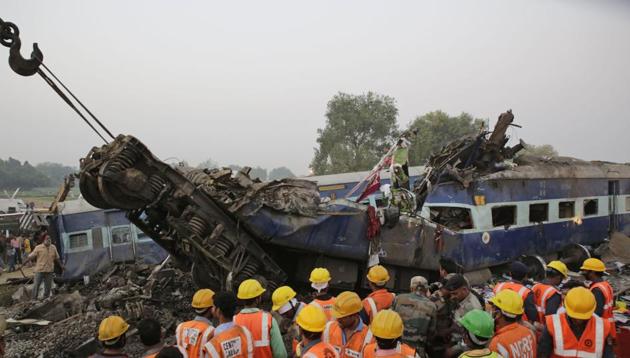Lessons from Kanpur train crash: Here’s how the railways can reinvent itself
The Indian Railways has been a strong leader in the past. There is no reason that with strong political leadership now, it can’t do even better .
The recent rail disaster in Kanpur is another grim reminder that the Indian Railways (IR) is in dire need of a serious overhaul. In the recent years, IR has faced several mishaps and has lost both passengers and freight. The gross earnings are lower than budgeted targets. Fare hikes could be an easy answer but the recent experiments with surge pricing have demonstrated a reduction in passenger bookings. The freight fares are already at their peak levels. It is not new for IR to face such a challenge, but this time the magnitude of deficits, both on earnings and loading are alarming.

The first focus should be on increasing freight revenue – IR’s earnings backbone. Past efforts have plateaued. One such solution is ‘overpowering’ of freight trains. Trains spend too much time accelerating and reaching their maximum permissible speed. By reducing the acceleration time, additional line capacity can be generated. Using three to four locomotives (instead of one) achieves this dual objective. Many countries have already cashed in, and are using three to four locomotives delivering 20,000 horsepower for 12,000 tonne trains. The railways needs to catch up and introduce remote control locomotive technology.
Read: Kanpur derailment: Dozens injured as Sealdah Ajmer Express goes off tracks
The second low-cost option is removal of Permanent Speed Restrictions (PSR), especially on curves, and provision of fencing at vulnerable locations. This has been tried in limited way while increasing the speed of the Gatimaan Express (Delhi-Agra) to 160 kmph. The freight train speeds continue to be abysmally low at national average of 20-25 kmph. The existing wagons are fit to move at 100 kmph, so it is hard to explain such a big gap. Poor line capacity and increasing terminal detention of wagons impact average speed of freight trains, and should continue to be on radar.
Another focus area should be rail fractures and rail weld cracks. These are the biggest threat to rail movement and safety as a single crack has the potential of stranding thousands of passengers. Fractures should be identified ahead of time using predictive identification technology and not by trackmen walking alongside thousands of kilometres of tracks. More fundamentally, we should understand why IR has many more cracks on average than many other rail networks in the world. The current experiment of using South African technology is a positive move in this direction for detecting cracks before substantial damage occurs.
With winter already here, the fog has started throwing train operations into disarray in North and Central India. This phenomenon should be an exception, rather than a norm. There is a dire need for inviting technology to handle train operations during fog. The present solution of using FOGSAFE device provides limited assistance to locomotive pilots.
Read: To battle fund crunch, Indian Railways may link fares to inflation
Deaths on the tracks due to negligence are unacceptable. Everyday more than 10 people die on the railway tracks in Mumbai alone by falling from overcrowded trains. To counter this, automatic door closing technology, also widely used worldwide, should be brought in. As a spin-off, this will also limit access to travellers only, thereby enhancing passenger security.
For improving safety further, IR is going in a big way to replace the existing ICF design coaches with LHB design coaches. While this is a necessary step, it is not sufficient. LHB design itself is 20 years old. There is a need to introduce lightweight, energy-efficient coaches that can also support speeds above 200 kmph on existing tracks. Train sets are a ready candidate. At the same time, LHB design coaches should also be upgraded to have jerk free couplers, automatic sliding doors, vacuum bio-toilets with higher utilisation and shorter terminal examination.
It goes without saying that IR should validate all technologies suggested here in Indian conditions. IR has not yet put in place a test track under RDSO. This is not expensive either and should be prioritised.
Read: Why the Indian Railways’ dynamic pricing system is a step in the right direction
The railways has started the process of internal management reforms. The pace should pick up. It should be pursued from the lowest level and not just limit itself to renaming members or creating more directorates. Labour saving tools such as high efficiency hand tools and tool belts need to be introduced with adequate training.
Digitisation is need of the hour. Once upon a time, IR was a pioneer in the digitisation movement when ‘PNR’ system was set up. It should percolate down to every domain of railway working.
The railways is working towards bringing high-speed trains to India. This will be the next rail revolution. Till then, there is a compelling need to improve what we have. Induction of new technology, upgrading existing coaches, safe and punctual running of trains, and better maintenance of tracks will result in a much better customer experience, leading to higher earnings.
The Indian Railways has been a strong leader in the past. There is no reason that with strong political leadership now, it can’t do even better.
Arunendra Kumar is ex-chairman Railway Board
The views are personal





